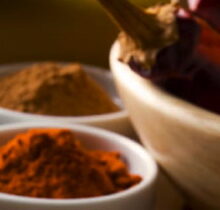The ancient traditional medicine of India, Ayurveda (ah-your-vay-duh), means “science of life”, or “life knowledge”, and is gaining both respectability and use in the West.
Originating some 5,000 years ago, this medical system included eight branches of medicine: internal medicine; pediatrics; ears, nose and throat; surgery; toxicology; psychiatry; aphrodisiacs (infertility); and rejuvenation. It is believed that Ayurveda formed the foundation for all other healing sciences.
Its premise is that everything in nature including human beings is made up of five elements – space, air, fire, water and earth – and that these elements combine to form three vital energies or, in Sanskrit, doshas: vata, pitta and kapha. These energies involve movement, metabolism and structure, and are present in all life.
We all know people who are more airy, fiery, or down to earth. However what does this teach us about our basic physical and mental traits, and its direct connection to our health and well-being?
According to Ayurveda, we are a combination of all three doshas with one more dominant than the others. It maintains the doshas are responsible for every function of the mind and body including physical characteristics, mental qualities and emotional tendencies. Vata governs breathing, circulation, neuromuscular activity and elimination. Pitta controls digestion, metabolism, body temperature, skin coloration and decision-making. Kapha gives the body structure and strength, lubricates and moisturizes it, and regulates the immune system.
In Ayurveda, each dosha has an optimal balance, and illness occurs when one or more becomes disproportionate. Early stages of an out of balance state reveal as generalized aches and pains, and vague undiagnosed symptoms. The first step in restoring and maintaining a level of balance to health and well-being is determining your unique constitution, or body type, your ratio of vata, pitta and kapha.
The guidelines and techniques used in Ayurveda to achieve balance are unique to each person. The approaches include a dosha-balancing diet, daily and seasonal routines, exercise, yoga, meditation, herbal therapies, and detoxification/purification procedures.
A Case Study
Judy is thin, energetic, creative and unpredictable. She talks, walks and thinks fast, and is often fatigued. Her friends said she could never sit still. Her daily schedule would constantly change. She would eat at different times of day, usually on the run, and her bedtime was anywhere between 11 p.m. and 2 a.m. Frequent anxiety, constipation and dry skin were her common complaints.
After learning about Ayurveda, Judy discovered she exhibited the basic characteristics of a vata type, and displayed signs of imbalances in that dosha. She learned to reduce those imbalances, and started noticing improvements in her life. She still is enthusiastic, spontaneous and versatile. However, her anxiety attacks have lessened and she feels calmer. She now has a routine for eating with less elimination problems and goes to sleep by 11 p.m. She feels stronger and has more focused energy.
Ayurveda seeks to prevent disease and maximize health and the quality of life by determining imbalances and correcting them. This comprehensive system of preventive medicine can be used in conjunction with Western medicine to reduce drug toxicity, rebuild tissues, strengthen the immune system and restore balance when drugs and surgery are necessary.
Ayurveda lifestyle consultants and Ayurvedic practitioners consider a person’s entire life, acknowledging there are physical, mental and spiritual issues involved with diseases. Hippocrates once said, “It’s more important to know what kind of person has a disease than what kind of disease a person has.”


